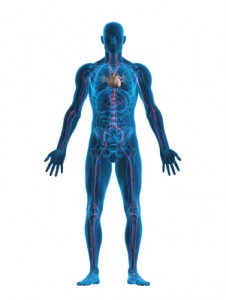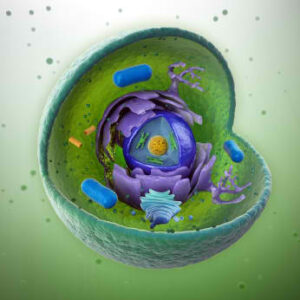Discoveries and evidence in contemporary medical discipline are continuous and rapid. The abundance of ways of thinking and dealing with the same health problem by different scientists and schools confuses patients and often even practitioners.
Which doctor to visit and which treatment to follow?
Conventional medicine, alternative medicine, homeopathy, natural medicine, functional medicine, are some of the several and different schools prevailing today, each one of them suggesting a different approach and opinion on treatment issues. Can a common place be found? Can different approaches be classified so that the best elements of each field and way of approach be used?
Scientific Knowledge and Objective Observation
Science by definition relates to the objective observation and report of knowledge. The truth, however, is that – as with any other human activity – the same applies to science: it is difficult to eliminate the subjective factor; the personal opinion and beliefs of each scientist inevitably shape and enter the observations and conclusions.
There are many relevant examples in the history of medical science, such as that of William Harvey who discovered coronary circulation in 1628. When he first announced that the heart functions as a pump directing blood within our body, a famous doctor of that time replied that rather err with Galen (prevailing theory claiming that good and bad fluids circulate in the body in waves) than proclaim the truth with Harvey.
Exsanquination performed on patients for the removal of bad fluids was a common cause of death at the time. Even two hundred years after Harvey’s discoveries in 1799, the first President of USA, George Washington, died of the “treatment” suggested to him by the best physicians at that time. It is thus inevitable for scientists to fall in love with their work, the discoveries and the things with which they repeatedly agreed during their career. It has been observed that during the development of science, more than three generations are required for a change to be incorporated and accepted in the prevalent scientific standard.
We are currently experiencing something unique in the history of humanity. We live in the era of information. The speed of information exchange and creation are unimaginable. It is estimated that the human written knowledge took 300 years to double in size, from 1450 until 1750 BC. Today human written knowledge doubles each year and until 2020 this is expected to occur every 72 days!
It is possible for someone to view the heyday and the disappearance of a theory within the same generation. As with the transition from the model of cholesterol – poor quality fluid blocking the tubes in which it circulates – to the model of inflammation as basic cause of atheromatosis (Harvard Medical School, 2011). The abundance of data and the infinite choices and directions that lie beyond us, more than ever, are perhaps the biggest problem for the contemporary researcher and scientist. Where are we today then? Medicine may therapeutically and diagnostically approach the human body in four distinct levels. Each level and way of thinking has its own application and is efficient in specific health problems.
At what point are we then now?
Medicine has 4 different levels of therapeutic and diagnostic approach. Each level and way of thinking have their application and are effective on specific health problems. The four levels are:
- Anatomical
- Biochemical and Molecular (Metabolomics)
- Electromagnetic
- Thought
1. Anatomical Approach
 The first level of approach is the anatomical. It involves the observation of the human body through a microscopic glance as a set of organs co-operating for the smooth operation of the human body.
The first level of approach is the anatomical. It involves the observation of the human body through a microscopic glance as a set of organs co-operating for the smooth operation of the human body.
It is a school and model of thought that dominated until the 50s. This is the reason for which the respective medical specialties are determined by the corresponding organs [cardio-logy (heart), gastro-entero-logy (abdomen and intestines), dermato-logy (skin), nephro-logy (kidney) etc].
Presents unique efficiency in the management and treatment of emergency and acute health problems.
The fracture of a bone, the intersection or the occlusion of an artery, a pneumonia as well as the perforation of an organ require immediate intervention for the restoration of the anatomical continuity and function. The implementation of this model and way of thought in chronic health problems, though, is of limited efficiency.
For instance, if someone hits their knee, the application of ice, the immobilization and the use of an anti-inflammatory drug may speed up healing and reduce pain and inflammation.
The use of similar treatment in a case where the pain is due to osteoarthritis (chronic arthritis) is not of therapeutic but of relieving nature. The final result is the deterioration of arthritis and the appearance of side effects due to the chronic use of painkillers.
Chronic health problems could be better explained following discoveries that started to take place from the middle of the previous century.
The study and understanding of the body at cellular and molecular level with the broad use of the electronic microscope from the 60s onwards marked the introduction of medicine in the era of biochemistry, genetics and molecular biology.
2. Biochemical and Molecular Approach (Metabolomics)
 The next level involves the effort to restore the biochemical balance of the body. Our body is an internal combustion engine burning carbon (glucose) in the presence of oxygen. A series of substances is required for this to happen. It concerns a series of chemical reactions that have a step-by-step result of energy production and normal cellular function.
The next level involves the effort to restore the biochemical balance of the body. Our body is an internal combustion engine burning carbon (glucose) in the presence of oxygen. A series of substances is required for this to happen. It concerns a series of chemical reactions that have a step-by-step result of energy production and normal cellular function.
The contemporary environment, the change of lifestyle, the lack of necessary nutrients and our charge with toxins contribute to the loss of the required biochemical balance and the appearance of a disease. Along with the relieving treatment, there is also the ability to measure and evaluate the metabolic and biochemical condition of the human body.
Hormonal, Biochemical and Metabolomic tests allow us to have a complete picture of the biochemical and molecular condition of the human body through the study of nutrients that are produced through metabolism (metabolites). The study of metabolites aiming at forming a customized therapeutic approach is called Metabolimics.
The doctor being aware of the deviation from optimal function, he/she is able to restore the body to normal function, placing greater emphasis on the enhancement of the patient’s health concomitantly with the management of the disease.
3. Electromagnetic Approach
 The third level consists of the approach relating to the electromagnetic field of the human body. We know that each cell on our body has its own electromagnetic field. The total of electromagnetic fields of the cells constitute the electromagnetic field of our body.
The third level consists of the approach relating to the electromagnetic field of the human body. We know that each cell on our body has its own electromagnetic field. The total of electromagnetic fields of the cells constitute the electromagnetic field of our body.
In an MRI, we make use of the properties of electromagnetic fields. We enter a huge magnet, all electromagnetic fields in our body are lined towards the same direction and we take a picture which is used to perform an anatomical diagnosis. Electroencephalogram and electrocardiograph are also lesion-recording applications in the electromagnetic field of the brain and heart.
The study of electromagnetic fields of the human body has been the subject of thorough scientific research for over 100 years. Both NASA and the Russian Space Program were the cause of development of great volume of knowledge in this particular field.
In 2009, a Greek scientific group from the Physiology Department of the Ioannina Medical School was awarded the first price in the research for the implementation of electromagnetic fields. The rapid progress in the field of personal computers allowed for the development of technologies that can use electromagnetic frequencies for both diagnostic and therapeutic purposes.
I believe that the time when we will enter a machine similar to the magnetic tomograph that will trace and restore deviations of our electromagnetic field in a therapeutic way is not far away. This is the level at which homeopathy is also involved. Homeopathic solutions do not contain the initial substance after several dilutions, however its electromagnetic footprint remains in the solution. In order for the electromagnetic balance to be restored, two prerequisites are biochemical adequacy and anatomical continuity.
As someone may therapeutically act in the electromagnetic field, he may just as well cause damage. The contemporary environment with its buildings, diet and all kinds of devices and networks continuously intervenes and alters the electromagnetic field of the human body. An extensive report by NASA scientists on this issue is available at the reference list at the end of the present article.
4. Thought is the Dominant Level
 Anaxagoras’ thesis that “Mind governs everything” has never been more timely. The contemporary quantum physics and epigenetics confirm the above thesis with compelling scientific criteria.
Anaxagoras’ thesis that “Mind governs everything” has never been more timely. The contemporary quantum physics and epigenetics confirm the above thesis with compelling scientific criteria.
The thought is for our body what the software is for a computer. The mere difference is that, whereas the computer requires an operator to enter a software, the human mind is capable of original thought. Discoveries, artwork, philosophies and entire civilizations have all started from a thought.
The bridge between thought and body function are our feelings. If we examine this from an anatomical perspective, we see that the brain cortex is linked to the pituitary and the hypothalamus, where the control centers of the hormonal system are located. In other words, a thought brings an emotion into the surface and this, in turn, causes the excretion of a hormone.
If we think of a time when we felt uncomfortable, this may make us experience the feeling of shame and blush as a result. Distinct emotions, such as fear, joy, boredom, sadness, cause the respective hormonal excretions. In the modern world, where the uncertainty about the future and our fear for us and the ones we love are dominant feelings, it is only natural for our body health to be affected, apart from our mental state.
The psychic stress translates to biological, it disturbs our metabolic and hormonal balance and is the trigger or often the cause behind chronic conditions. The physician should aid the patient distinguish the metabolic from the psychological stress as otherwise this vicious cycle steadily deteriorates the health of the latter and frequently that of the physician. Physicians are a population group with increased morbidity indices in stress-related diseases.
A tremendous task
In summary, medical science may approach our health in four levels: Anatomical, Biochemical – Molecular (Metabolomics), Electromagnetic, Thought. As it can be easily understood, the task of the modern therapist is extremely hard and difficult, as all surrounding factors tend to destabilize the patients’ health in all levels described above. From diet to newscast, we are constantly exposed to factors oriented towards a direction other than that of good health.
The above data may be used as a tool in order to better detect the origin of harm and the solution towards which we should be directed. The greater the understanding regarding an issue, the more intense our will and ability to do something about it. Although we live in an extremely difficult time for many reasons, we are able to do things about our health more than any other era in the history of humanity.
Cheers to You!
______________________________________________________
Sources:
en.wikipedia.org / wiki / File: William_Harvey_2.jpg
en.wikipedia.org / wiki / Nuclear_magnetic_resonance
www.britannica.com / EBchecked / Anaxagoras
hmg.oxfordjournals.org/content/6/9/1451.full
www.ncbi.nlm.nih.gov/pubmed/21170889
www.ncbi.nlm.nih.gov/pubmed/21109217



